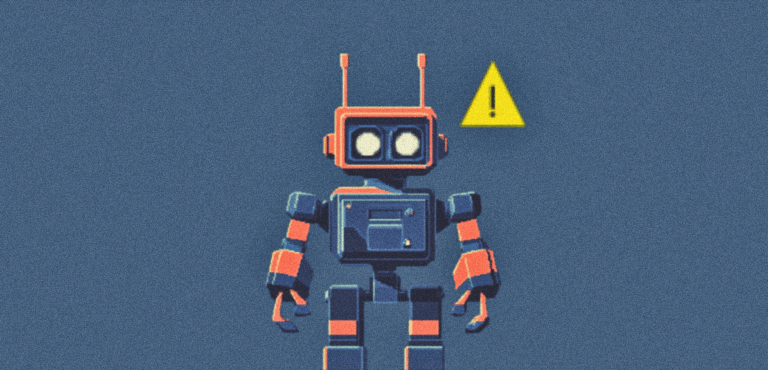
AI in Open-Source: Opportunity or Threat?
Senior engineers across the industry are noticing a curious trend in pull requests. Contributions increasingly carry signs of AI assistance, cleaner structures, more consistent documentation, and that slightly too-perfect commenting style. This isn’t just about individual preferences. It signals a deeper transformation in how open-source projects evolve.
The impact stretches beyond code quality. Long-held assumptions about authorship, licensing, and community dynamics are being tested. Are we witnessing technology-driven collaboration at its best, or stepping into new legal and ethical uncertainty? Let’s take a closer look.
Contributions evolve beyond recognition
Open-source generative AI models have democratised contribution in surprising ways. Developers with strong architectural ideas but limited coding ability can now submit production-ready code. Geographic and resource barriers are breaking down as AI tools level the field.
Recent Linux Foundation reports show more than 100,000 developers contributing to 68 hosted projects across 3,000+ organisations. Many submissions bear AI fingerprints, optimised algorithms, comprehensive error handling, and unusually consistent documentation.
This democratisation creates both opportunities and challenges. With AI support, junior developers contribute at near-senior levels, accelerating their learning. Yet project maintainers increasingly distinguish between “AI-fluent” and “domain-fluent” contributors. The first deliver technically polished code quickly; the second understand architecture, trade-offs, and system integration.
Business models are shifting too. Companies once reliant on scarce technical talent for an edge now find their knowledge less exclusive. Competitive advantage is moving toward superior design and integration rather than just developer availability.
Legal frameworks scramble to catch up
Traditional open source licenses assumed human authorship. AI changes that. When contributions come from models trained on copyrighted code, ownership becomes murky.
The OpenMDW license is one response. Unlike conventional licenses, it explicitly covers machine learning models, training data, model weights, and related components, aiming to reduce ambiguity around permissions.
Current licensing landscapes reveal significant gaps. Analyses of platforms like Hugging Face show that only about 35% of AI models carry any license, and of those, roughly 60% use traditional open-source frameworks never designed for AI use cases. While exact figures shift over time, the broader pattern is clear: custom licenses are filling the gaps, creating a fragmented legal environment that complicates enterprise adoption.
Enterprises are responding in very different ways. Some demand disclosure of AI assistance. Others focus solely on code quality. A few attempt outright bans, though with AI tools spreading fast, such policies are almost impossible to enforce.
Business transformation accelerates
AI in open source is reshaping more than code, it is changing business operations. Companies realise they no longer need large in-house teams when AI can generate significant portions of functionality.
This alters competitive dynamics. Smaller firms now contribute meaningfully to projects once dominated by large players. Educational institutions also benefit, as students access high-quality, AI-generated examples that accelerate learning.
Revenue models around open source are evolving. Traditional service contracts and enterprise features lose ground as automated tools deliver work once handled by experts. On the flip side, documentation, a longstanding weak spot in open-source is improving thanks to AI-generated guides, references, and examples.
But risks remain. Heavy dependence on external AI services creates new vulnerabilities. Many tools require cloud platforms with their own licensing rules and availability concerns, clashing with the open-source’s principle of independence.
Industry sectors adapt differently
Adoption varies across industries.
- Financial services: cautious, given regulatory demands.
- Media and entertainment: faster to embrace AI for prototyping.
- Healthcare: gains from AI-driven test frameworks and documentation, where coverage must be thorough.
- Manufacturing: applies AI to industrial IoT, benefiting from consistency in code patterns.
AI tools also help ease talent shortages. Instead of only hiring senior engineers, companies can train staff to pair domain expertise with AI’s efficiency.
Quality reviews are evolving too. With AI catching syntax errors and bottlenecks, reviewers focus more on architecture and design decisions, raising the level of technical discussion.
Risks demand serious attention
AI in open source comes with challenges too. Here’s where the risks begin to surface.
| Risk | Description |
| Legal uncertainty | AI-generated code may mirror copyrighted training data, creating ownership and IP disputes. |
| Community splits | Divides can emerge between AI-heavy and traditional contributors, leading to style and collaboration conflicts. |
| Dependency risks | Heavy reliance on external AI platforms introduces availability, licensing, and vendor-lock concerns. |
| Shallow expertise | Contributors may deliver working code without deep system understanding, causing integration or security issues. |
Future directions take shape
Managing AI in open source requires fresh approaches. Hybrid licenses that distinguish human-written from AI-assisted contributions are emerging. Disclosure practices, similar to academic citation, are gaining ground.
The EU AI Act adds another layer, with transparency and labelling requirements that may extend to commit messages and documentation.
Clear guidelines and active community management will be essential. Projects that set rules early, adapt based on experience, and pair AI-fluent newcomers with domain experts achieve the best outcomes. This mentorship preserves project culture while embracing modern workflows.
Practical implications
The shift is fundamental. AI in open source is not going away, so adaptation matters more than resistance. Projects that integrate AI thoughtfully, while safeguarding collaboration, independence, and learning, will thrive.
Licensing frameworks will stabilise as legal precedents form, but the transition period demands careful navigation. Democratisation is real: AI helps wider groups contribute meaningfully, but success depends on balance.
Communities that set contribution policies, invest in education, and evolve licensing will lead. Those that ignore AI risk irrelevance, while blind adoption risks losing the collaborative spirit that defines open source.
Distilled
AI in open source brings unprecedented opportunity alongside serious challenges. The future depends on thoughtful integration, clear policies, and continued commitment to the core values of transparency, collaboration, and shared innovation.